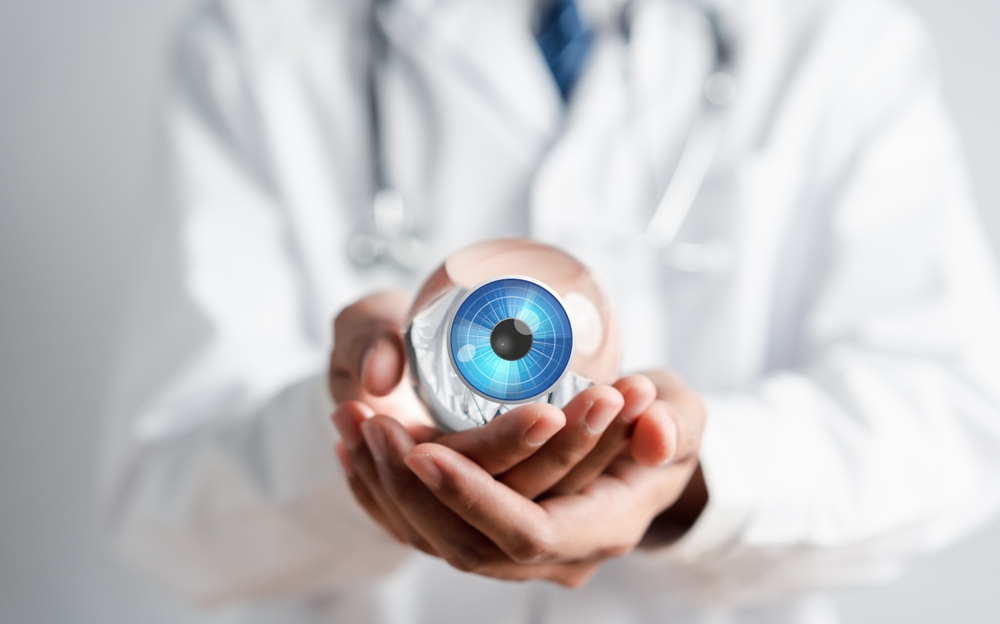
When we look at the eye, we only see a small portion of its total structure. Most of the eye is hidden within the skull, protected by the bony eye socket. The visible part, however, is just the tip of the iceberg. Behind that lies an intricate system of components working together to enable us to see the world in all its vibrant colors and varying depths.
Understanding eye anatomy is not just about satisfying intellectual curiosity. It's also crucial for maintaining eye health. By knowing the different parts of the eye and how they function, you can better comprehend and respond to changes in your vision or eye health.
The Cornea and its Functions
The cornea, the eye's outermost layer, is a clear, dome-shaped surface that covers the front of the eye. It's the first structure that light hits when it enters the eye. Think of it as the eye's window to the world.
The cornea's primary function is to refract, or bend, light as it enters the eye to help focus it onto the retina. It's responsible for about two-thirds of the eye's total optical power. Without the cornea, the eye would not be able to focus light properly, leading to blurred or distorted vision.
Apart from refracting light, the cornea also acts as a protective barrier against dirt, germs, and other harmful particles. It's rich in nerve endings, making it highly sensitive to pain, thus encouraging us to protect our eyes from potential injuries.
What Does the Iris Do?
The iris, the colorful circular structure surrounding the pupil, is often the first thing we notice about a person's eyes. However, the iris is more than just an aesthetic feature; it plays a crucial role in controlling the amount of light that enters the eye.
The iris adjusts the size of the pupil, the black circular opening in the center of the iris, in response to changes in light intensity. In bright light, the iris contracts, reducing the pupil's size to limit the amount of light entering the eye. In contrast, in low light, the iris relaxes, allowing the pupil to dilate and let in more light.
Aside from light regulation, the iris also contributes to the eye's focusing system. By changing the pupil's size, the iris helps control the eye's depth of field, enhancing the clarity of our vision.
The Role of the Lens in Eye Anatomy
Positioned behind the iris and the pupil, the lens is a clear, biconvex structure that further focuses the light entering the eye onto the retina. Its flexibility allows it to change shape, controlling the eye's ability to focus on objects at various distances, a process known as accommodation.
When viewing objects close-up, the lens becomes thicker to increase its refractive power, bringing the object into sharp focus. Conversely, when viewing distant objects, the lens becomes thinner, reducing its refractive power.
As we age, the lens becomes less flexible, leading to a common condition called presbyopia, where the eye struggles to focus on nearby objects. It's also worth noting that the lens is susceptible to cataract formation, where the lens becomes clouded, impairing vision.
The Retina and its Importance
The retina is the innermost layer of the eye, lining the back of the eyeball. It's the 'film' of our camera-like eye, capturing the focused light and converting it into electrical signals.
The retina contains millions of light-sensitive cells called rods and cones. Rods handle vision in low light, while cones manage color vision and detail in bright light. Once these cells detect light, they generate electrical signals that are sent to the brain via the optic nerve.
Without a healthy retina, vision would be significantly compromised. Diseases such as age-related macular degeneration and diabetic retinopathy can damage the retina, leading to vision loss.
The Function of the Optic Nerve in Vision
The optic nerve, a bundle of more than one million nerve fibers, plays a vital role in vision by transmitting visual information from the retina to the brain. It's like a high-speed data cable, carrying signals representing colors, brightness, shapes, and movement.
Any damage to the optic nerve can have severe consequences for vision. A common condition affecting the optic nerve is glaucoma, a group of eye conditions that can lead to vision loss and blindness by damaging the optic nerve, typically due to high eye pressure.
Other Key Structures in the Eye
While the aforementioned structures are crucial to vision, several other components play supporting roles in eye anatomy. The eyelids and eyelashes protect the eye from foreign objects, dust, and excessive light. The tear glands produce tears to keep the eye moist, clean, and lubricated. The muscles attached to the eyeball enable eye movement, allowing us to look in different directions without moving our heads.
The Importance of Understanding Eye Anatomy for Eye Health
The human eye is a marvel of biological engineering, with each structure playing a role in the miracle of sight. Understanding eye anatomy not only brings us closer to appreciating this intricate system but also equips us with knowledge crucial for maintaining our eye health.
Awareness of the structures of the eye and their functions can help us understand the changes we may experience in our vision and respond appropriately. It also underscores the importance of regular eye examinations to ensure the health of our eyes and preserve our precious sight.
For more information on eye anatomy, understanding the structures and their functions, contact City Eyes Optometry Center at our office in Sherman Oaks, California. Call (818) 960-1300 to book an appointment today.



